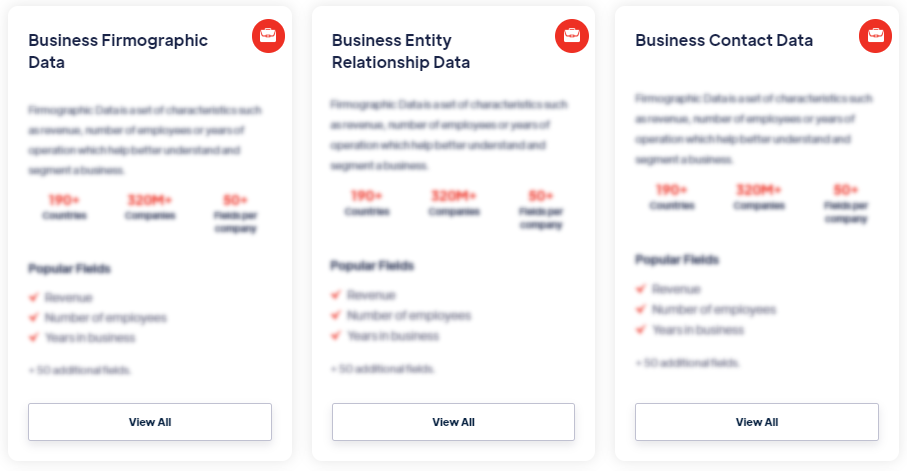Best
Media Rating Data
Products
Media rating data refers to the information and ratings assigned to media content to assess its quality, popularity, or audience reception. It includes ratings such as viewer ratings, critic reviews, audience scores, box office performance, book sales rankings, music charts, and video game ratings. Media rating data helps consumers make informed decisions about what to watch, read, listen to, or play, and assists industry professionals in content evaluation, advertising placement, and programming decisions. Read more
Our Data Integrations


Request Data Sample for
Media Rating Data

Browse the Data Marketplace

Frequently Asked Questions
1. What is Media Rating Data?
Media rating
data refers to the information and ratings assigned to media
content to assess its quality, popularity, or audience
reception. It includes ratings such as viewer ratings, critic
reviews, audience scores, box office performance, book sales
rankings, music charts, and video game ratings. Media rating
data helps consumers make informed decisions about what to
watch, read, listen to, or play, and assists industry
professionals in content evaluation, advertising placement, and
programming decisions.
2. Why is Media Rating Data important?
Media rating data plays a vital role in the media
industry by providing insights into the audience's
preferences, evaluating content quality, and guiding content
selection. For consumers, media rating data helps inform their
entertainment choices and provides an indication of the quality
and suitability of the content they intend to consume. For
industry professionals, media rating data assists in
understanding audience preferences, optimizing advertising
strategies, and making data-driven decisions for content
creation and distribution.
3. How is Media Rating Data collected?
Media rating data is collected through various methods
depending on the type of media. Television ratings are typically
collected through audience measurement systems that track
viewership using representative samples of households. Movie
ratings are compiled through box office revenue, critic reviews,
and audience surveys. Book sales rankings are gathered from
retail outlets and online platforms. Music charts are determined
by sales, downloads, and streaming numbers. Video game ratings
are assigned by industry organizations or through user reviews
and ratings.
4. What are the types of Media Rating Data?
Media rating data encompasses a wide range of
information, including TV ratings (such as Nielsen ratings),
movie ratings (such as Rotten Tomatoes or IMDb ratings), book
sales rankings (such as New York Times Best Seller List), music
charts (such as Billboard charts), and video game ratings (such
as ESRB ratings). These ratings provide insights into the
popularity, critical reception, and audience preferences for
various forms of media.
5. How is Media Rating Data used?
Media
rating data is used by consumers to make decisions about what
media content to consume based on ratings, reviews, and
popularity indicators. Industry professionals utilize media
rating data to evaluate content performance, inform marketing
and advertising strategies, guide content acquisition decisions,
and assess audience preferences. Advertisers may leverage media
rating data to identify popular platforms and programs for ad
placement, ensuring maximum reach and effectiveness.
6. What are the challenges in Media Rating Data
analysis?
Media rating data analysis poses challenges related to
sample representativeness, biases, and changing media
consumption habits. Ensuring that the rating samples accurately
represent the target population is crucial to draw meaningful
insights. Biases, such as selection bias or self-selection bias,
can influence ratings and skew the results. Additionally, with
the advent of streaming platforms and digital media, tracking
and aggregating data across multiple platforms can be
challenging due to differences in methodologies and availability
of data.
7. What are the ethical considerations in Media Rating Data
analysis?
Ethical considerations in media rating data analysis
include ensuring transparency, avoiding conflicts of interest,
and safeguarding against biased or manipulated ratings.
Transparency in the data collection and rating methodologies is
important for maintaining credibility. Organizations responsible
for rating systems should have measures in place to avoid
conflicts of interest and maintain independence. Additionally,
efforts should be made to address potential biases and ensure
fair and unbiased ratings that reflect the diverse perspectives
and preferences of the audience.
â€
